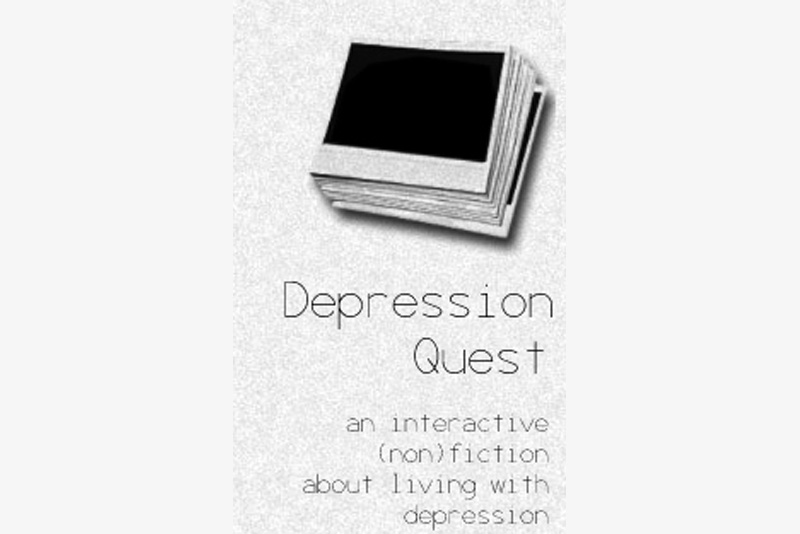Amnesia The Dark Descent - PC

A puzzle-horror game, "Amnesia" eschews combat and action in favor of immersive terror-based gameplay.
"Amnesia: The Dark Descent" casts the player as Daniel, who is (appropriately enough) an amnesiac. He's trapped in a dark, abandoned castle, and must navigate it and find his way out. The main gameplay is puzzle-centric, with a few features that make it stand out. The first of these is the use of light: if Daniel is not standing in the light, his sanity meter drains, eventually causing panic and hallucinations. Light can be generated in two ways: either using a tinderbox on a candle or torch, or using your lantern. Both tinderboxes and lamp oil are limited, so the player can't always be in the light.
Adding to this is the presence of monsters of various shapes and types. Unlike some "survival horror" games, there is no way for Daniel to defeat the monsters. Instead, they must be avoided. This is most commonly done by hiding in the shadows - but the above problem presents itself, forcing the player to choose between their safety and their sanity. This adds to a sense of actually being hunted - monsters aren't just there to be easily outsmarted or defeated, they're plausible threats that the player has to deal with.
The puzzles aren't anything special - they're just sort of an obstacle. They're probably the least-notable part of the game. The whole "light and dark" thing gets a lot more attention; puzzles are just a way to occasionally break up that mechanic. One neat thing about the game is that your character "interacts" with objects: he picks them up (with ghostly invisible hands) and can throw them, rotate them, and so on. Doors aren't just slammed open, the player's invisible hand grips the doorknob and pushes or pulls on it. While this is kind of a neat touch, the fact that "Daniel" doesn't actually have a model makes it kind of weird - you can't see your body, so it's just sort of floating in front of you.
Overall, "Amnesia: The Dark Descent" wasn't perfect, but it had some neat ideas. It's atmospheric and it does a lot with illumination, which is something that a lot of games don't care much about. Other than its main mechanic it's kind of simplistic, and might not hold the player's attention if they get bored of "stay out of darkness except when monsters are around", but if you can deal with that then it's pretty good.
Rating: 8/10.
"Amnesia: The Dark Descent" casts the player as Daniel, who is (appropriately enough) an amnesiac. He's trapped in a dark, abandoned castle, and must navigate it and find his way out. The main gameplay is puzzle-centric, with a few features that make it stand out. The first of these is the use of light: if Daniel is not standing in the light, his sanity meter drains, eventually causing panic and hallucinations. Light can be generated in two ways: either using a tinderbox on a candle or torch, or using your lantern. Both tinderboxes and lamp oil are limited, so the player can't always be in the light.
Adding to this is the presence of monsters of various shapes and types. Unlike some "survival horror" games, there is no way for Daniel to defeat the monsters. Instead, they must be avoided. This is most commonly done by hiding in the shadows - but the above problem presents itself, forcing the player to choose between their safety and their sanity. This adds to a sense of actually being hunted - monsters aren't just there to be easily outsmarted or defeated, they're plausible threats that the player has to deal with.
The puzzles aren't anything special - they're just sort of an obstacle. They're probably the least-notable part of the game. The whole "light and dark" thing gets a lot more attention; puzzles are just a way to occasionally break up that mechanic. One neat thing about the game is that your character "interacts" with objects: he picks them up (with ghostly invisible hands) and can throw them, rotate them, and so on. Doors aren't just slammed open, the player's invisible hand grips the doorknob and pushes or pulls on it. While this is kind of a neat touch, the fact that "Daniel" doesn't actually have a model makes it kind of weird - you can't see your body, so it's just sort of floating in front of you.
Overall, "Amnesia: The Dark Descent" wasn't perfect, but it had some neat ideas. It's atmospheric and it does a lot with illumination, which is something that a lot of games don't care much about. Other than its main mechanic it's kind of simplistic, and might not hold the player's attention if they get bored of "stay out of darkness except when monsters are around", but if you can deal with that then it's pretty good.
Rating: 8/10.

Related Articles
Editor's Picks Articles
Top Ten Articles
Previous Features
Site Map
Follow @lisavideogames
Tweet
Content copyright © 2023 by James Shea. All rights reserved.
This content was written by James Shea. If you wish to use this content in any manner, you need written permission. Contact Lisa Shea for details.



